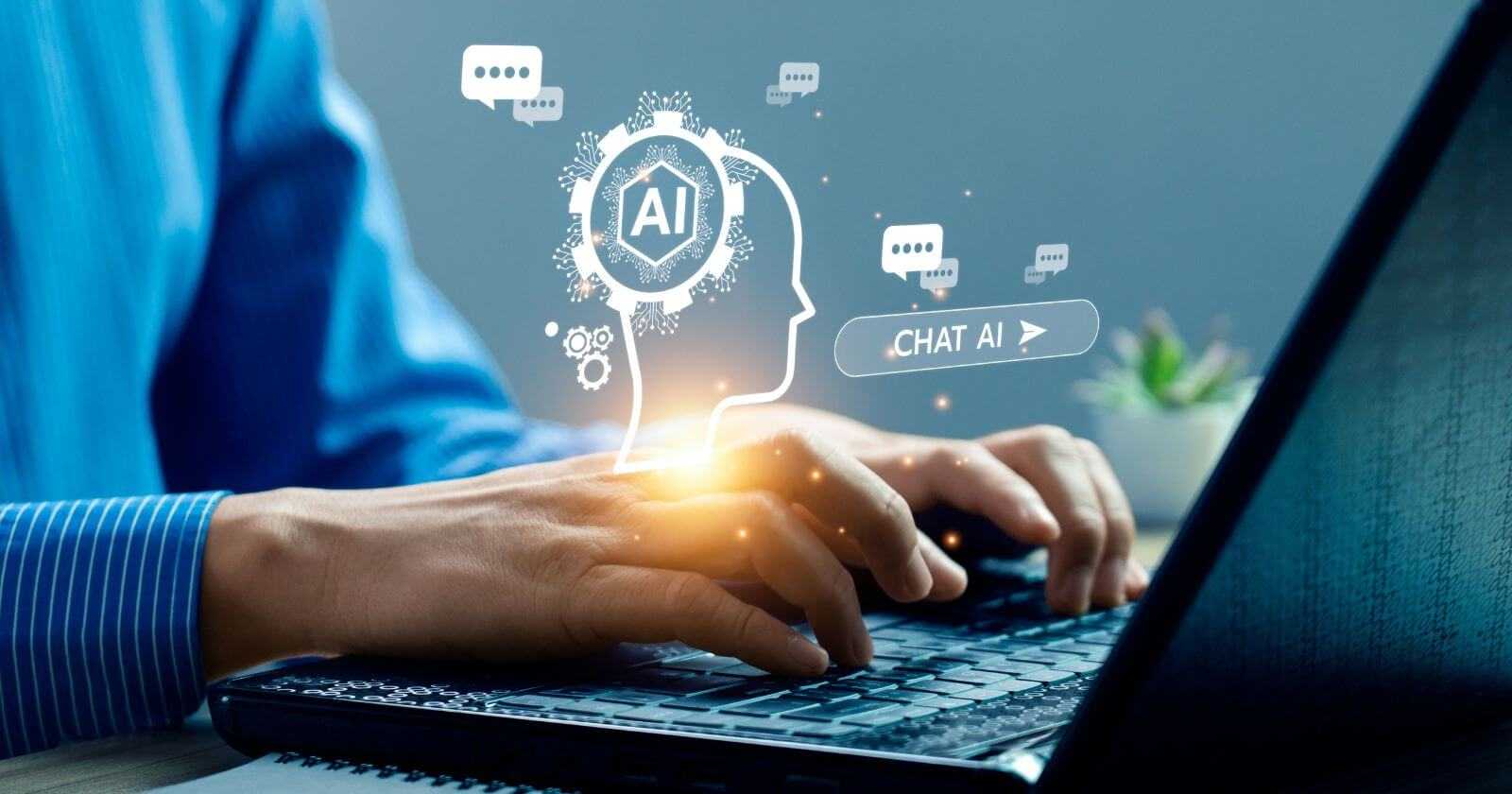These days, many businesses are looking to improve their customer interactions and intra-corporate communication. Chatbot development is essential to achieve this. AI chatbots have changed the way organizations operate by significantly reducing response times to internal inquiries, fostering better collaboration among team members, and automating repetitive tasks.
But how to build a chatbot that increases your bottom line, and what are the legal limitations of AI bot development? In this guide, we will explain the current state and benefits of chatbots for business, overview the bot architecture, and provide examples of its use in different domains.
At the end, we will provide an EU AI checklist to assist you in determining the category to which your AI solution belongs. In a nutshell, this law defines the rules for how artificial intelligence technologies can be used in the European Union. Following requirements for each AI solution category will help you avoid regulatory pitfalls.
The Current State of Chatbots
Until recently, the chatbot development sector had limited opportunities for natural language generation and, thus, user engagement. Previous models had restricted context and struggled to account for long-term dependencies in the text. The 2022 ChatGPT release wowed the industry with significant improvements in text generation, the ability to understand the wider context, and provide higher quality responses. This, in turn, opened new opportunities for the implementation of artificial intelligence services.
So, what is the current state of chatbots? Let’s uncover it by examining the latest chatbot statistics that will be useful for businesses considering developing their custom virtual assistants.
- Growth in the chatbot market. This tendency is evident yet let’s delve into the specific growth figures. According to Statista, the chatbot market is set to reach 454.8 million U.S. dollars in revenue in 2027.
- Customer interaction. 25% of organizations are expected to rely primarily on chatbots for customer service by 2027.
- Popularity among large companies. In the chatbot market, sizable corporations are swiftly embracing this technology compared to smaller entities, capturing a significant 46% market share.
As for chatbot development trends, the main one is voice-enabled AI assistants. They are particularly useful in situations where users may have their hands occupied or when they want to access information quickly without having to type.
Another fact to keep in mind is that chatbots will become more human-like. To do this, chatbot development companies focus on natural language processing (NLP) and contextual understanding techniques. It also consists of incorporating sentiment analysis to grasp the emotional tone of user inputs, allowing the chatbot to respond with appropriate empathy.
The future of chatbots is intertwined with emerging technologies like quantum computing, advanced NLP models, and decentralized AI. These technologies hold the potential to push the boundaries of what chatbots can achieve.
Anticipated developments include improved contextual understanding, increased integration with IoT devices, and the evolution of chatbots into even more sophisticated virtual assistants capable of handling complex tasks.
How Do Chatbots Work?
For those keen on understanding how chatbots work, we have a comprehensive guide prepared. Typically, bots employ three main classification models to function:
- Pattern Matcher
This model analyzes the user’s textual input by comparing it against an extensive database of predefined text. The bot tries to identify patterns or similarities, extracting relevant information to formulate an appropriate response. One common format for representing these patterns is Artificial Intelligence Markup Language.
- Algorithms
Algorithms in chatbots are a set of instructions or rules that determine how the chatbot should respond to various input signals. They determine the chatbot’s logic, capabilities, and reactions. The main components of algorithms are Natural Language Processing, Decision Making, Conversation Management, and Model Updating and Improvement.
- Artificial Neural Network (ANN)
It’s a complex system that mimics the structure and function of human biological neural networks. ANNs are used for information processing, learning, and decision-making based on large amounts of data. In chatbot development, ANNs enhance natural language understanding (NLP), enabling the network to learn and interpret various aspects of human speech. This assists chatbots in adapting to variations in speech expression and improving question recognition.
While chatbots may seem complex, integrating it into your business doesn’t have to be. AI bots significantly improve your operational processes by conserving precious time and enhancing the precision of your predictions. Let’s take a closer look at the benefits of integrating chatbots into business strategies.
Business Benefits of Chatbot Development
Here’s how the bot development is making a notable difference across various business functions:
Interacting With Clientele at All Hours
As mentioned earlier, advanced bots utilize NLP algorithms to understand and address user queries with a nuanced approach to simulate human conversation. By employing these technologies, businesses can craft responsive digital assistants that not only operate 24/7 but also adapt to the unique linguistic patterns.
Saving Costs by Minimizing Routine Work
Machine learning (ML) algorithms, a cornerstone of chatbot development services, enable your digital assistant to acquire knowledge and adapt continuously. This permits chatbots to manage tasks of growing intricacy, minimizing the necessity for human involvement in mundane procedures. Through reinforcement learning, chatbots can continually refine their performance. This enables businesses to allocate resources more efficiently, directing human talents towards creative duties.
Personalizing Corporate Education
By utilizing natural language understanding (NLU) capabilities, chatbots can assess individual learning styles and preferences, tailoring learning content to suit diverse needs. The incorporating educational chatbot with adaptive learning algorithms allows businesses to deliver a more customized training, ensuring that costs spent on corporate programs will bring them maximum value.
Read also: The Role of Digital Twin Technology in Corporate Learning
Discover how to advance corporate education through digital twins
Improving the Inventory Check Processes
In general, the chatbot implementation in inventory management involves integration with radio-frequency identification solutions and IoT sensors. This way, chatbots conduct live tracking, oversee inventory levels, and compile reports. The predictive analytics embedded in chatbot allows businesses minimize the risk of shortages or excess stock.
Integration into Existing Corporate Software
Seamlessly incorporating chatbots into current corporate software relies on the strength of application integration frameworks and the utilization of APIs. This enables businesses to implement chatbots that interact with pivotal tools such as customer relationship management systems, enterprise resource planning software, and other essential applications.
Chatbots have become integral to modern client communications. And that’s not surprising, with over 50% of the clientele favoring organizations that employ bots.
The creation and performance of digital assistants may differ depending on the platform chosen for development. Azure AI services for custom bot development, for one thing, offer a compelling environment with pre-built models for creating and deploying bots of any scope.
Read more: How to Use Azure AI for Custom ML and AI Development
Explore why and how to use Azure AI services for developing AI/ML solutions
A Closer Look at the Chatbot Architecture
Without question, your chatbot should be designed with user-centricity in mind. You may have an amazing conversation flow, but it doesn’t make sense if the bot can’t understand different options of expressing thoughts, synonyms, ambiguity, and other linguistic characteristics. In this section, we examine the proper chatbot architecture that guarantees the system works as expected.
User Interface (UI)
First, focus on the simplicity and clarity of the interface so that users can easily understand how to interact with the bot. The use of clear text commands and graphic elements allows you to reduce the entry threshold barriers.
Second, you should consider the context of the interaction. The best chatbots employ an adaptive approach, tailoring their responses to the individual needs of each user. Ensure utilization of data from previous sessions, behavioral analysis, and personalized responses to provide excellent interaction experiences.
Input Processing
This element defines how the chatbot understands and interprets incoming user messages and consists of:
- Natural Language Processing (NLP)
It employs various techniques to analyze the entered text. Tokenization breaks the text into individual words (tokens), lemmatization reduces words to their basic forms to unify meanings, and POS tagging identifies parts of speech to better understand the context. Entity recognition, in turn, detects and classifies specific objects or concepts in the text, which can be essential for further interaction.
- Intent Recognition
Here’s how it works: intent models are trained on machine learning algorithms to recognize user intent. Dynamic context models take into account the history of interactions to more accurately define user needs. Completing this process involves providing a response, which includes analyzing the results of the intent determination to further respond to the user’s questions or commands.
Dialogue Management
Its goal is to process questions and answers, managing the flow of the conversation. The primary features of dialogue management include defining the context of previous messages. The bot must be capable of tracking the topic and comprehending how the user modifies their questions or expresses new interests.
When building a chatbot, consider also creating a system to handle unexpected situations where the user enters something that the bot can’t respond to correctly. Well-created dialogue management also entails linguistic features, including synonyms, ambiguity, and contextual shifts in word meanings.
Backend Integration
Each chatbot must be integrated with the backend to ensure interaction between the user interface and the server. This requires a robust mechanism for exchanging data between the chatbot and the server. The chatbot backend architecture can handle requests from the bot, execute business process logic, and return results.
Backend integration may involve processing and storing user information and interacting with other systems or services to acquire additional information or execute specific tasks. Namely, such systems can be:
- ERPs;
- Computer Aided Design (CAD);
- Product Lifecycle Management;
- Payment Processing Services;
- User Authentication Systems;
- Social Network APIs;
- Analytical Tools.
Response Generation
At this phase, one prominent aspect involves employing text generation algorithms, such as recurrent neural networks (RNNs) or transformative models. Generating responses can be rule-based or machine learning-based.
In rule-based systems, fixed rules and templates are used to generate responses. In the case of a machine learning-based approach, models are trained on a large amount of data, taking into account context, emotional tone, and other parameters.
Memory/Storage
This component is responsible for storing and managing information about users and their interactions. The feature can include temporary and permanent memory.
Temporary memory stores data about the current chatbot session, such as the state of a particular dialog and recent questions. Persistent memory stores important data between sessions, such as user information, preferences, and interaction history.
Your chatbot’s architecture is important for both user experience and performance. With a solid chatbot structure you’ll improve dwell time and entice customers to explore products and services further or enable your employees to complete more tasks.
5 Main Types of Chatbots
Chatbots are distinct. They vary in the underlying architecture, conversational models, or integration capabilities. Some of them leverage rule-based systems and others harness deep learning neural networks.
To decide which bot will be perfect for your organization, explore how these five types of chatbots work:
#1. AI Chatbots
These are considered advanced bots since they leverage artificial intelligence for automated communication. To bring the value to fruition, AI chatbots leverage deep learning for text analysis, speech recognition and even solving tasks that require context understanding.
They are fueled by text generation models that undergo training on extensive datasets, enabling them to respond to a wide array of questions and commands. It helps them adapt to diverse communication scenarios and recognize emotions in text.
#2. Rule-Based Chatbots
These bots operate according to predetermined rules and logic, determining how the chatbot should respond to specific input or user questions. Chatbot development companies define keywords, patterns, or expressions that may occur when interacting with a virtual assistant.
#3. Retrieval-Based Bots
To determine the most appropriate info, retrieval bots leverage a database and learned models. To put it simply, they reproduce pre-prepared responses following the similarity of the user’s questions to those that have already been processed and registered accordingly.
After analyzing the input, the chatbot defines which answer is most relevant to the context. This is achieved by text comparison algorithms such as cosine similarity or machine learning models that take into account semantic relationships between words.
#4. Generative Chatbots
In this type, the generation of answer text occurs through the utilization of a deep neural network, specifically the GPT (Generative Pre-trained Transformer) architecture. These chatbots acquire a wide array of textual information during pre-training and demonstrate the ability to produce novel and varied responses without being constrained by specific patterns.
During conversations, they examine the context, take into account previous questions and answers, and generate new text to respond to the user’s inquiries or comments as accurately as they can. This process entails employing models with recurrent and transformer layers to maintain and analyze context.
#5. Vocal Chat Assistants
These software systems leverage a voice interface to chat with users. This is achieved through automated speech models that convert the audio signal into text. The system then applies NLP techniques to discern user intent and determine the optimal response.
Now when you are acquainted with the main chatbot types, let’s learn how different industries apply digital assistants to upgrade their day-to-day workflows.
AI Chatbots Use Cases Across Different Industries
Indeed, chatbots significantly expanded the companies’ capabilities, driving business automation that boosts ROI. The versatility of AI chatbot development is evident in its varied use cases and applications:
#1. Facilities
With resource management being a prime way for economic benefits, the need for a robust system that effectively monitors and manages energy consumption has never been more urgent. Integrate your custom AI chatbot with monitoring systems and let it analyze the accumulated data and provide operational recommendations on its own.
You can also develop a chatbot for improving work planning and organization. It automates HR processes such as distributing tasks among workers, providing information about the status of assignments, and reminders about deadlines. This will ensure the optimal use of human resources in your organization.
#2. Oil & Gas
Since most operations in this domain take place at large facilities or remote locations, there’s a need for a system that assists in emergency problems immediately. AI chatbots can interact with field workers, collecting data on the condition of equipment, as well as providing quick access to the knowledge base.
By analyzing this data in real-time, the virtual AI assistant identifies possible problems and offers solutions. For example, after detecting machinery malfunctions, the chatbot provides recommendations for solving the problem or even initiates an emergency response process.
#3. Construction
Picture this – you’ve hired a new employee and tasked them with inspecting scaffolding. In addition to a visual assessment, he must consider the stability of all connections and fasteners, the condition of working platforms, and more. If he encounters uncertainty during a specific inspection stage, there’s no need to contact the manager and wait for a response. Instead, he can simply pose the question to an AI chatbot.
You can apply this method to other processes involved in creating or examining construction projects, including virtual designs. Integrate your virtual assistant into the BIM system to obtain immediate answers to any questions that may arise during the process. Furthermore, a unified AI-based knowledge system ensures that all your employees are on the same page, reducing the likelihood of misunderstandings.
Read more: All About VR in Virtual Design and Construction
Explore how VR development can improve you VDC platform
#4. Maritime
The custom chatbot development here simplifies the complex tasks of logistics and supply chain management. The chatbot analyzes large amounts of data, taking into account factors such as weather conditions, traffic, and infrastructure constraints, and helps make optimal decisions.
#5. Manufacturing
Just like in the previous domains, the chatbot in manufacturing industry has several use cases. But let’s focus on this one. You’ve developed and integrated your chatbot into the Manufacturing Execution System (MES) or industrial digital twin. Such a chatbot assists in data analysis and reporting. You can ask it to generate customized reports, analyze trends, and provide insights into production efficiency.
As an alternative, train your bot to provide real-time data on raw materials, work-in-progress, and finished goods. This way, you’ll optimize stock levels, reduce excess inventory, and ensure that production aligns with demand.
#6. Utilities
The recent data showed that utility companies in the United States achieved a mean customer satisfaction rating of 72 out of 100. How to improve this?
Consider creating a chatbot to automate the process of scheduling appointments with technicians. To delight your customers, add features that inform them about estimated arrival times or provide real-time updates on the status of their service requests.
To prevent incorrect calculation of consumed energy, develop a chatbot that provides accurate meter readings through spoken prompts and instructions. Your clients can simply upload a photo of the meter, from which the bot will extract information automatically.
How to Make a Chatbot With AI Capabilities
Implementing AI chatbots into your organizational framework is a substantial endeavor demanding specialized skills and expertise. Although certain companies choose to handle it independently, the intricacies often result in suboptimal results.
The expert roadmap to making chatbots with AI features looks like the following:
- Clarify Purpose and Use Cases
What exactly are you creating a chat bot for and what tasks should it solve? Clear goals guide the chatbot development process, guaranteeing that the chatbot aligns with the overall business objectives. List the tasks the chatbot will perform, such as retrieving data, filling out forms, or help make decisions. Identify potential user interactions and map conversation scenarios.
- Choose a Platform
Determine whether the chatbot will be used on the Internet or internally in the corporate infrastructure. For example, it can be a web app, a messaging platform, or a corporate software system.
For more flexibility and control over your deployment environment, consider cloud platforms such as Microsoft Azure, Amazon Web Services (AWS), or Google Cloud Platform. These cloud-based solutions make it easy to scale and manage resources, as well as ensure high availability of the chatbot.
- Select an AI Chatbot Tech Stack
First of all, you should choose a programming language that meets the needs of the project. Python, due to its simplicity and extensive ecosystem, is a popular choice for many chatbot developers.
Next, to provide high-quality natural language processing, it’s recommended to use libraries and tools such as spaCy or NLTK. AI chatbot development experts leverate web development frameworks such as Flask or Django to create a chatbot interface and handle questions in real-time.
The application of machine learning technologies, in particular the TensorFlow or PyTorch libraries, will improve the chatbot’s ability to self-learn based on user data. When dealing with extensive data and tasks demanding real-time processing, utilize technologies like graphics processing units (GPUs) or specialized platforms tailored for handling arrays of data, (e. g. Apache Kafka).
- Collect and Clean Data
This process typically involves the collection of textual data such as chat logs, user input, and bot responses. The main emphasis is on the representation of speech variations and communication scenarios.
After collection, the data goes through a cleaning process to remove noise and unnecessary information and create a consistent and structured data set. This contains removing duplicates, correcting typos, and removing sensitive information. Python libraries such as Pandas and NumPy prove useful in collecting and preparing data.
- Train NLP Models
At the outset, we gather huge datasets, including different variations of questions and answers that can be entered by the user. This data allows the creation of a corpus of text that serves as a basis for training the models.
Next, chatbot development companies leverage machine learning algorithms such as transformer-based models (for example, GPT-3), which were previously trained on a large amount of general text data. These models recognize intents, analyze syntactic structures, and generate responses. The training process involves optimizing model parameters using techniques such as backpropagation to improve response accuracy and adapt to a specific user interaction context.
- Design Conversational Flow
At this stage, dedicated experts define the logic and structure of dialogues between the user and the chatbot. This includes scripting, defining key access points, integrating the language model, and establishing query processing strategies.
To achieve optimal conversational costs and ensure high-quality user service, the developer must take into account contextual aspects, such as personalizing responses according to the current state of the chat, implementing control questions, and taking into account possible interaction scenarios.
- Integrate Your AI Chatbot With Other Systems
Use API technologies to provide convenient data exchange between the chatbot and these systems. RESTful or GraphQL are usually used to ensure efficient and standardized information exchange. Additionally, consider security aspects by providing encryption and authentication to prevent unauthorized access to sensitive data.
- Implement User Input Processing
In modern chatbots, deep learning and neural networks are widely employed approaches. They improve the accuracy of processing user questions. Models trained on large amounts of text data can detect complex patterns and provide more accurate interpretations of various input forms.
- Use Natural Language Generation (NLG) Techniques
NLG is aimed to automatically generate text from processed data or concepts, allowing chatbots to understand and express themselves in natural language. This involves using statistical models, deep learning, and natural language rules to generate answers.
- Integrate User Interface
Consider cross-platform and cross-device interface adaptability so that the chatbot can optimally display and work on different devices. Integration also includes the ability to process user input and commands, speech recognition, and interaction with other systems such as databases or external services.
- Test Thoroughly
Check if all chatbot components work correctly. Run test suites and examine answers to a variety of questions and interaction scenarios.
Conduct integration testing to verify the seamless interaction of all bot elements. It involves real users or simulations of their activities in the process to assess usability and identify possible flaws in the interaction.
- Deploy and Monitor
Initially, experts in bot development deploy the model on servers or in a cloud environment. Using containerization such as Docker can simplify the deployment process and ensure environment consistency.
After deployment, you’ll need to set up a monitoring system to track chatbot performance in real-time. This includes monitoring answers, response times, server load analysis, and error detection. Utilizing tools like Prometheus or ELK (Elasticsearch, Logstash, Kibana) enables quick identification of issues.
Done. Your bespoke chatbot is ready to delight your customers or improve internal workflows.
What Are the Legal Constraints for Creating AI Chatbots Worldwide?
The development and deployment of AI chatbots are subject to a complex web of international laws. While some countries have embraced comprehensive regulations, others are yet to catch up.
The USA legislative commission suggested numerous laws related to AI. 15 states and Puerto Rico have established regulations related to the use of artificial intelligence. Some states are contemplating the formation of committees on AI research, while others are voicing reservations regarding its potential impact on healthcare, insurance, and employment services.
In April 2021, the European Commission launched an initiative: the inaugural regulatory blueprint for AI within the EU. The proposal is aimed to evaluate and categorize AI software solutions applicable across various domains, based on the potential risks they may pose to users.
We’ve prepared a checklist to determine which category your business falls under the EU AI Act. It will help you to ensure that your AI-powered solution will align with these regulations.
EU AI Act Checklist to Determine the Risk Category of Your AI Solution
Check if your AI solution does not violate the legal aspects of using artificial intelligence to steer clear of regulatory hurdles.
Final Words
The success of any chatbot development project relies on many elements. Beyond custom use cases, expertise required, and selecting tech stack, you should also take into account legal constraints that are in place in the country where your AI solutions will function. Although creating a comprehensive AI chatbot takes time and effort, it will pay off later with capabilities to advance user engagement and streamline internal processes.



